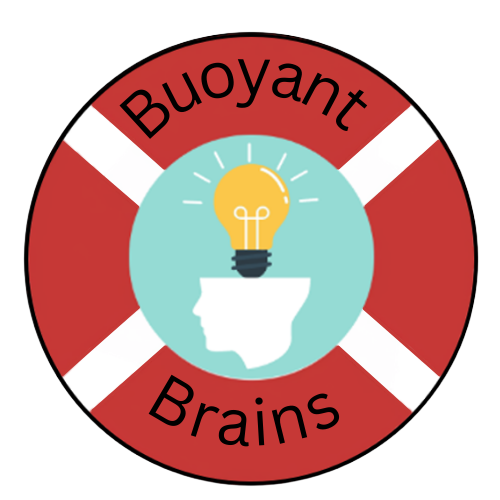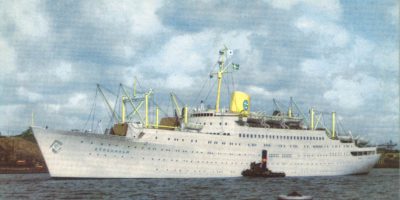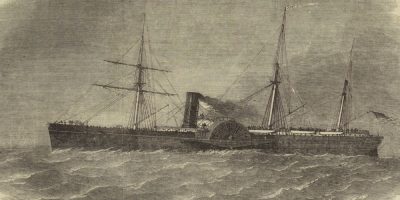Andrea Doria VS Stockholm
The tragic collision on July 25, 1956 that underscored the value of radar technology, catalysing the creation of improved collision avoidance systems, and crew training.
The content below is structured in an accordion, just select the titles to open it up . Also, click on the names of the ships to direct you to more information.
Disclaimer:
The analysis below is complied on available information at the time of writing and it is an interpretation. This, by all means, is not exhastive coverage. We only point out how situations could be avoided.
1. Introduction
The SS Andrea Doria, a 213m, 29,083 GT Italian ocean liner, represented national pride and luxury. Its ill-fated journey began in Genoa, Italy, heading for New York City.
The MS Stockholm, a 160m, 12,165 GT Swedish ship, was New York-bound for Gothenburg, Sweden.
The MS Stockholm still lives, almost 7 decades later, to tell the tale and is now known as MV Astoria.
2. What Happened?
2.1. The Collision Situation
The collision occurred in dense fog off Massachusetts’s Nantucket coast. The Andrea Doria was enveloped in fog while Stockholm was outside the fog bank, making radar the main source for detection. Both vessels constrained by time were travelling at unsafe speeds, Andrea Doria doing 21 knots and Stockholm doing 18 knots.
The vessels, roughly 17 miles apart, failed to realise their collision course until it was too late.
It still remains unclear over what eactly transpired that night, but negligence and poor situational awareness are common themes.
2.2. Actions They Took
Despite radar detection, a misunderstanding of the data by either or both vessels led to mistaken course plotting. Andrea Doria planned for a starboard-to-starboard pass, while Stockholm prepared for a port-to-port pass.
It’s said that the officer on the Stockholm overestimated the radar range scale, thinking the Andrea Doria was further away.
Finally, realising they were on a collision course only when visibility allowed – and at a dangerously close distance – both ships attempted evasive manoeuvres, but it was too late. The Andrea Doria turned hard to port trying to speed away, and the Stockholm attempted to slow down by reversing its propellers.
Essentially, misinterpretation of radar data and visibility due to fog caused the ships to act on incorrect assumptions and realise the danger too late. This emphasises the importance of correct data interpretation, clear communication, and proper adherence to maritime rules.
2.3. Outcome
Stockholm’s bow punctured the starboard side of the Andrea Doria, creating a substantial hole. The Andrea Doria sank the following day, while the Stockholm returned to New York with a severely damaged bow.
Fifty-one lives were lost, prompting a review of maritime safety rules, training, communication, and equipment use. Additionally, this incident, among others, underscored the need for a revision in stability criteria to determine ‘seaworthiness’.
3. Applying The Rules
Here, we apply modern maritime rules to the incident. While the 1956 rules were based on the British Board of Trade’s 1864 set, they lacked the depth of current regulations. It’s believed basic rules were in place, such as lookout, safe speed, and signals. Notably, Traffic Separation Scheme (TSS) rules were absent.
3.1. The Basics
Going back to the most crucial points of the COLREGS, Section 1, & rule 19, we can analyse how to avoid getting into their situation.
When applying Rule 5, as stated in the rule book, ‘all available means’ should be used. Modern maritime technology has advanced significantly since 1956, providing us with numerous tools to aid safe navigation, such as AIS, ECDIS, and GPS. When navigating in fog, it’s vital to ensure all these aids are appropriately set up for early hazard detection. Placing lookouts forward or on the bridge wing can assist in detecting objects that might not appear on your electronic aids. The earlier an object is detected, the more time you have to analyse and react
Applying Rule 6, safe speed is highly circumstantial; each vessel has a different safe speed for various scenarios, hinging on situational awareness. It’s crucial to be fully aware of your surroundings, your equipment’s setup, and your vessel’s status, while being ready to respond safely to any changes.
For the Andrea Doria, travelling at 21 knots, it’s wise to consider the possibility of an oncoming vessel at a similar speed, resulting in a combined speed of 42 knots. With a hypothetical radar detection range of 10 miles, providing approximately 14 minutes until collision, there would still be sufficient time to react for a manoeuvrable ocean liner. However, for a large, deep-draught container ship, this might be too close for comfort.
Rule 7 helps us identify when a collision or close-quarters situation exists. An important point for this incident would be the ‘proper use of radar equipment’. Radar is the most significant aid for collision avoidance in fog, offering early detection if set up correctly. It’s vital that all bridge officers are familiar with radar operations, its functions, and characteristics.
All ships over 300 GT and all passenger vessels must now be equipped with X-Band and S-Band radars. S-Band radars provide better aid than X-Band for long-range detection, especially in rain or fog.
Rule 19, restricted visibility, dictates what actions we should take once we have confirmed or assumed (if doubtful) a collision situation exists.
It’s key to remember that as soon as the situation involves a curtain of fog, Rule 19 comes into force and there is no hierarchy between vessels anymore; there’s no such thing as a ‘stand on’ vessel, and actions are applied when a collision situation exists.
3.2. Radar
According to the course recorder data that was retreived from both vessels, stockholm was heading 090° true and the Andrea Doria was heading 268° true.
When the two ships first spotted each other, they were about 17 miles apart, with a combined speed of roughly 39 knots; Andrea Doria detected the Stockholm on her starboard, and the Stockholm detected the Andrea Doria on her port side.
Let’s try to visualise the situation using the concept of radar plotting sheets. If you’re unfamiliar with these, they were traditionally used to calculate the data of echoes that appeared on radar. By systematically plotting this data, the crew could determine the closest point of approach (CPA) and the time until that point. From there, they could calculate various vessel data, such as course and speed.
Fast forward to our current era, most radars now come with automatic radar plotting aids (ARPA), which perform these calculations once a target is acquired. However, in the 1950s, ARPA technology hadn’t been introduced yet, which emphasises why improving radar technology was crucial following incidents like this.
Imagine the first red mark on a radar plotting sheet indicating the initial echo of the Stockholm roughly 17 miles away. From that alone, it would be challenging for Andrea Doria to fully comprehend the situation, including whether there was a risk of collision or a close quarters situation, and what course the Stockholm was taking. The same would apply for the Stockholm.
After adding more equal timed plots to the radar plot, a line can be drawn from the first dot through the last dot, giving a better idea of relative movement and whether a risk of collision or a close quarters situation exists. This is assuming both vessels maintain their course and speed during the plotting.
A completed plotting sheet would include the vector of the Stockholm, calculated for a specific timeframe, allowing a more comprehensive understanding of the situation.
If both vessels had properly executed their duties—maintaining safety of the ship, ensuring lookout, assessing risk of collision, and preserving full situational awareness—they would have been systematically executing these plots.
This whole exercise highlights the crucial role of radar technology and the importance of accurately interpreting radar data for safe navigation, especially in challenging conditions like fog or darkness.
3.3. Route
Earlier, it was highlighted that both vessels seemed to be under some time pressure to reach their destinations punctually. In Stockholm’s case, she decided to streamline her route by sidestepping the advised channel lanes, choosing instead to proceed north of her designated channel. This choice likely led her into the lane designated for opposing traffic, and is thought to have been a crucial factor in the subsequent collision.
Had Stockholm remained in her east-bound lane, the two vessels might have simply passed each other port to port, in line with the protocol observed by many vessels today within a traffic separation scheme. However, Stockholm’s deviation from the established route undoubtedly led to confusion for Andrea Doria. When Andrea Doria detected Stockholm on her starboard via radar, with no visual reference, it created a challenging scenario for navigation and ultimately led to their tragic collision.
3.4. Navigating in Fog
1950s navigational rules for fog, focusing on safe speed and lookout, lacked the detail of modern Rule 19. This rule specifies when and how to navigate in fog, detailing avoidance actions in close-quarters situations. It mandates reduced speed, enhanced lookout, and radar plotting upon impaired visibility.
To keep the conent digestable, this part is broken down into stages of analysis.
3.4.1. Aspect
The radar plots below will help you visualise the situation. Number 1 being the Stockholm and number 2 Being the Andrea Doria.

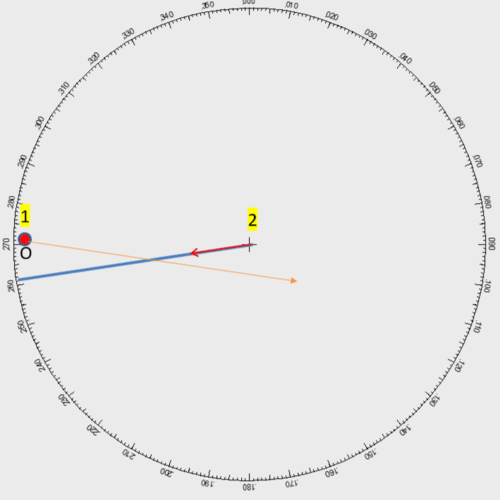
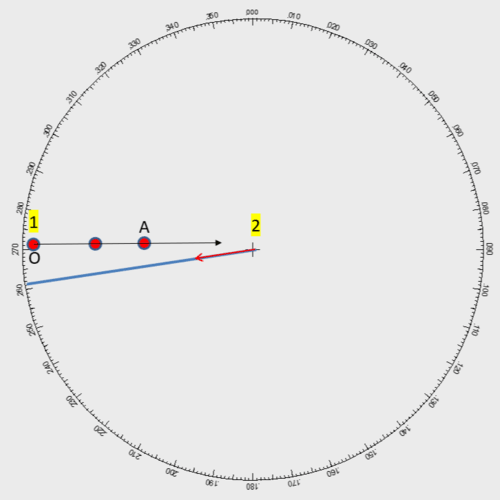
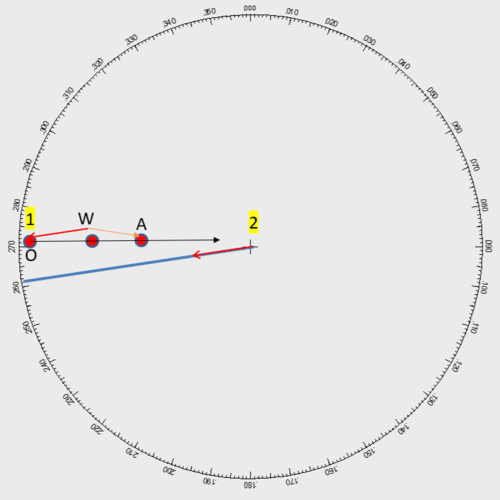
3.4.2. Andrea Doria
Using the radar plots above, we have established a close quarters/ collision situation exists and the Stockholm shows a crossing aspect from starboard to port. I could calculate the time to the closest point of approach (CPA) and adjust speed if more time is needed to assess the situation.
As per Rule 19, I should avoid altering course to port for a vessel forward my beam. Therefore, my options are to slow down and/or alter to starboard.
Before we decide on a definitive action, let’s consider the options for the Stockholm.
3.4.3. Stockholm
According to the radar plot, the Andrea Doria was detected on Stockholms’s port side, forward of her beam also with a crossing aspect. So, the same options apply to Stockholm: alter course to starboard and/or slow down.
3.4.4. Best Action
First of all, when vessels are navigating in or near fog, rules 5 (lookout) and 6 (safe speed) should be reconsidered as conditions have changed. this includes; posting extra look-outs, adjusting speed if required and checking all available equipment is set up for the appropriate conditions.
Both vessels altering to staboard is the best option, if both vessels decide to slow down to avoid the other, the collision course simply gets prolonged.
However, According to an article, the Andrea Doria was hesitant to head to starboard due to potential hazards. So, this makes the situation trickier. A chart assessment would be required to see the leeway to starboard, and to check for any other incoming traffic. The Andrea Doria could have used all available sea room to her starboard and slowed down.
It’s worth emphasising that navigating in fog or other scenarios where visibility is impaired can be particularly challenging. Therefore, OOW should consult the ship’s specific checklist for such situatios.
The master should be advised when the vessel is approaching areas of restricted visibility. Depending on the severity of the situation, they will often spend most of their time on the bridge, ensuring the vessel’s safety at all times.
A better understanding of the regulations involved can be found in the COLREGS section, with examples and visualisations.
4. Summary
The collision between the SS Andrea Doria and MS Stockholm in 1956 highlighted the limitations of radar technology and the need for better training, communication, and collision avoidance systems. The accident emphasised the importance of adhering to the rule of the road and the need for comprehensive training for ship officers in the proper use of radar equipment and the interpretation of radar data.
Key lessons learned from the accident include:
The importance of adhering to established navigation routes: The Stockholm’s decision to avoid the recommended channel lanes and proceed north of her channel increased the risk of collision.
The need for maintaining a safe speed: Both vessels were traveling at relatively high speeds in restricted visibility conditions, reducing their ability to react in time to avoid a collision. Safe speed should be adjusted according to the visibility and the vessel’s maneuverability.
The importance of proper use of radar equipment: The accident highlighted the limitations of radar technology at the time and the need for better training in radar use and interpretation.
Navigating in fog: Systematic radar plotting and adequate lookout are crucial when navigating in fog or restricted visibility conditions.
As a result of the accident, the maritime industry focused on improving radar technology and developing better collision avoidance systems. The introduction of Automatic Radar Plotting Aid (ARPA) in the 1970s significantly improved the ability of navigators to track and predict the movements of other vessels, reducing the risk of collisions.
The accident also led to revisions in the International Regulations for Preventing Collisions at Sea (COLREGS), emphasising the importance of taking early and substantial action to avoid collisions. The updated rules provided clearer guidance on navigating in fog and maintaining a safe speed in restricted visibility conditions.
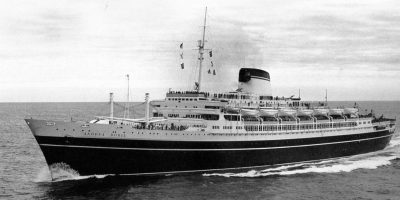
Steam Ship Andrea Doria
